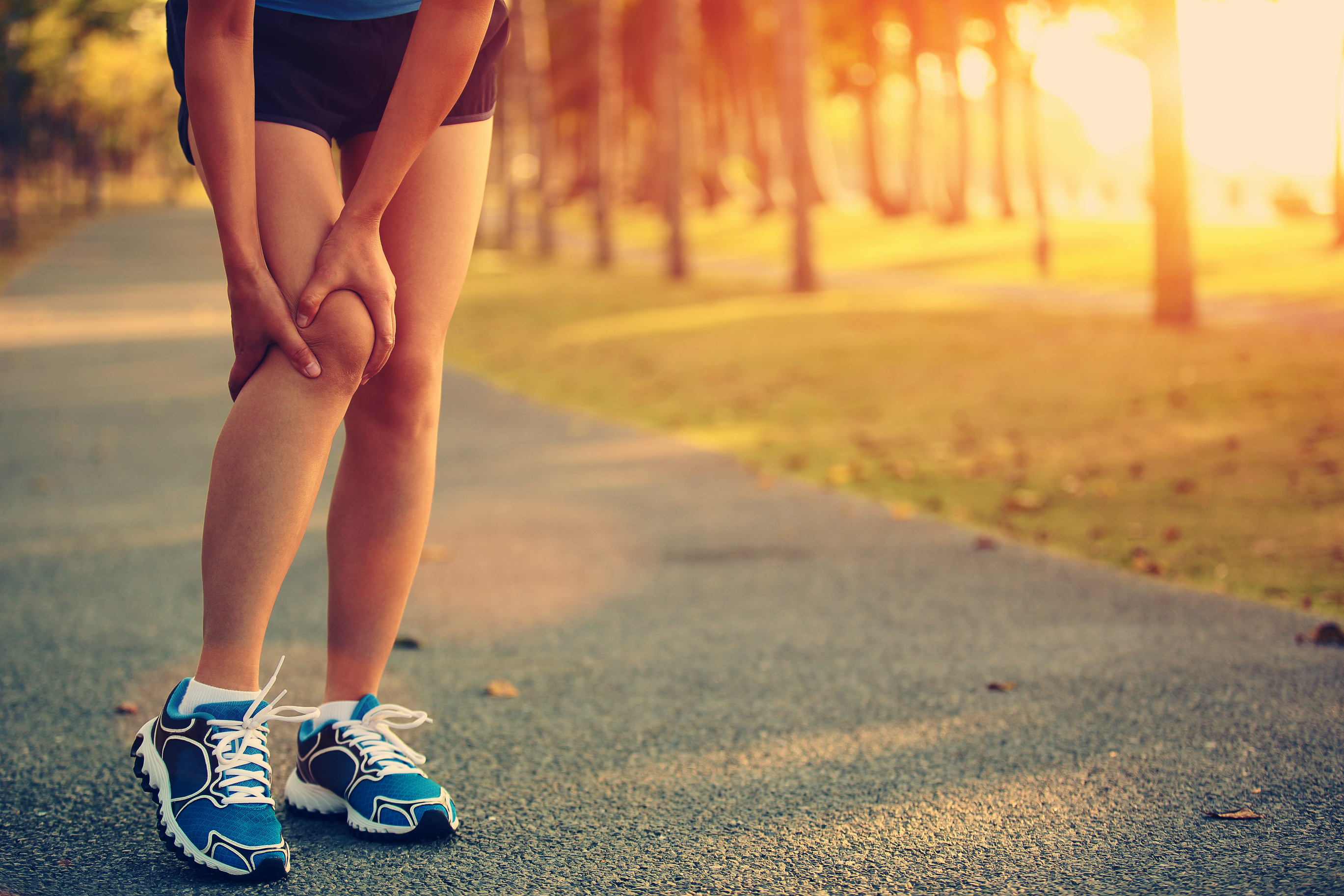Iliotibial band syndrome

The iliotibial band is a layer of connective tissue on the outside of the thigh, spanning from the hip (ilium) to the outside of the knee and tibia (shin bone) – hence its name. The iliotibial band’s primary functions are to stabilize the knee and the lateral (outside) aspect of the hip. As such, it resists internal movement of the hip and internal rotation of the knee. Iliotibial band syndrome (ITBS) is the second leading cause of knee pain in runners and the most common cause of lateral knee pain. Female runners are twice as likely as male runners to suffer from ITBS.
What is ITBS?
Iliotibial band syndrome is defined as pain of the distal attachments of this band of tissue at or near the knee. Overuse of the iliotibial band causes inflammation to develop within or adjacent to the band. Over time, this inflammation can develop into damage and scarring of the band. The pain can range from mild to intense and is typically aggravated by activity and improves with rest.
What causes ITBS?
Traditional theories on causes of ITBS have centered around the idea that friction between the iliotibial band and the outside of the femur (lateral femoral condyle) caused inflammation and pain. However, more recent research contradicts this theory. Studies have found no differences involving knee flexion and extension patterns in runners with ITBS and healthy controls. In addition, the band does not “snap” or move across the lateral knee according to functional MRI studies. Current research points to compression and strain in the iliotibial band as the primary cause of pain. The driving force for this abnormal strain and compression of the iliotibial band is increased inward hip movement (adduction) and internal knee rotation. Anatomically mal-alignment of either the hips, legs, or feet can contribute to ITBS. For example, runners who’s legs are not equal in length or who’s thighs angle inwards have a greater risk of developing ITBS. One common training error related to ITBS is running on sloped or uneven surfaces.
How is it diagnosed?
ITBS is diagnosed by clinical examination of an injured runner. The location of pain and aggravating factors are generally enough to make a proper diagnosis. Sometimes x-rays and MRI’s are used to evaluate for bone spurs, arthritis, and inflammation or damage to the iliotibial band.
How is ITBS treated?
Initial treatment for ITBS focuses on reducing inflammation, improving strength and flexibility where needed, and altering training and equipment that have lead to the injury. Ice and NSAIDs (non-steroidal anti-inflammatory drugs) such as ibuprofen and naproxen can reduce inflammation and pain. Effective ways of icing include massaging the affected area with a frozen bottle, an ice pack, or an ice cube placed in a zippy bag. Cortisone injections are sometimes used to reduce inflammation and pain in the affected area. Specific stretching and strengthening exercises can help improve biomechanics in the hips, legs, knees, and feet. One important factor to consider is the iliotibial band is a dense, non-stretchable tissue. Consequently, stretching only works when focused on muscles in the hip and leg rather than attempting to “lengthen” or “stretch” the iliotibial band. Physical therapy has proven to be an effective treatment modality for ITBS. Taping, which is commonly used to treat knee pain, has not been studied sufficiently for ITBS. There is a lack of good evidence to support taping in iliotibial band syndrome. This doesn’t mean that taping won’t work for some patients, it simply means this area needs more research. So, temper your expectations for success with taping and ITBS.
When can a runner return to activity?
The goal of rehabilitation from ITBS is to return a runner to activity as soon as possible. However, if a runner returns too soon, the injury will also return or worsen. Every runner recovers at a different rate. A return to sport is governed primarily by how soon the knee pain and function improve rather than by a defined number of days or weeks. Typically, the longer the symptoms have been present, the longer the recovery. A runner can return to sport when: they can bend and flex the knee without pain, they are able to run without limping, and they are able to jump on both legs and each leg individually without pain. A managed return to running is recommended and a qualified health care professional can best assess the proper time and speed of that return to running.
What can be done to prevent ITBS?
The most effective ways to reduce the risks for ITBS are to improve the biomechanics associated with its onset. For example, improving strength and flexibility in the hips, thighs, and calf muscles will reduce the chances ITBS affects your running. But, the most important question is how will you know what biomechanical variables need to be improved? The best method for determining areas of biomechancial deficiency is a 3D gait examination where the movement patterns of the hip, legs, and feet are fully evaluated. Finally, vary your training environment and even vary your shoes from run-to-run. These factors will decrease the chances your running program is affected by ITBS.
This information is not intended to diagnose, treat, or prevent any injury or disease. It is intended to serve as an overview of running-related injuries and should not be used as a substitute for sound medical advice from a doctor or therapist.



